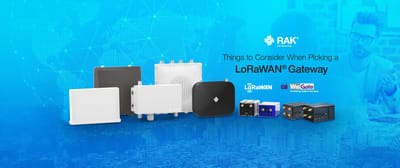How PLC Technology Can Take IoT Even Further
Even the remotest parts of the world are on their way to integrating the Internet of Things (IoT) into their everyday lives. The simple yet revolutionary technology used to build IoT networks simplifies various manual processes that would have taken days or months or were even deemed impossible at one point.
The next hurdle in connecting the world through IoT is worldwide access. While there are a handful of solutions to providing IoT connection and access, like LoRaWAN or LPWAN, the slow rollout time may postpone the possibility of having a more connected world. There is one technology, however, that may have been overlooked but can expedite the dawning of the age of IoT–Power Line Communications, or PLC.
What is PLC?
Power Line Communications is a communication technology that utilizes existing low-voltage power lines to transmit signals. PLC technology can also transmit high-speed data, voice, and video quickly and efficiently.

WisLink LX200V20 EVB
WisLink LX200V20 EVB is a new type of based on OFDM (Orthogonal Frequency Division Multiplexing) modulation technology of data transmission products. Power line maximum transmission rate can reach 200 Mbps, provide standard Ethernet front-end ports, also support the twisted pair interface.
There are different types of PLC that can offer access within one's home only to broader access for wider networks. Narrowband PLC has been seen to be an effective application to use for IoT implementations because it works similarly (and well) as LoRaWAN technology when we speak for implementing the Smart Grids.
Also read The Importance of High Power WiFi Module and Power Line Communications
How can PLC technology be used for IoT?
Although used all over the world, PLC technology is still one of the most underutilized for IoT deployments. Some companies like RAKwireless, the leading IoT solutions provider, want to capitalize on this golden opportunity by creating solutions built for PLC. The WisLink PLC series consists of modules that are made to work with PLC technology.

WisLink LX200V30
WisLink LX200V30 is a new type of data transmission product based on OFDM (Orthogonal Frequency Division Multiplexing). The maximum transmission rate of power lines can reach 500Mbps. Standard ethernet ports, as well as the two interfaces of twisted pair and coaxial cable, are provided.
With the WisLink PLC series, PLC technology can be maximized for use not only for Smart Grids and micro-inverters, but for applications such as traffic light control, irrigation, in-house machine-to-machine communication, and many more. Paired with its cost functionality, PLC may well be one of the easiest and fastest ways to deploy IoT solutions worldwide.
What are the advantages of PLC?
The integration of IoT with PLC technology presents in itself a lot of opportunities. Below are just some of the advantages of PLC:
⁃ Low-cost: Because PLC is already in place, it does not require new wire installation and significantly reduces the deployment costs needed. Apart from this, compared to other technologies like visible light communication or VLC, PLC is still much cheaper.
⁃ No additional load on the range: Because of the way PLC works, the introduction of sensors and other IoT solutions will not affect the power load of the system. This eliminates the possibility of losing connection or having power outages.
⁃ Efficient: Even with a small allocation of power data, PLC can already connect dozens of IoT devices on the network. This efficiency will also translate well in lowering the costs needed to implement IoT via PLC technology.
⁃ Generally available worldwide: Save for some countries, PLC lines are available worldwide, which would help developers and implementors deploy IoT networks from one corner of the globe to another in a flash.

WisLink LX200V20
WisLink LX200V20 is a power line communication module, designed for embedded design application. It is compact, supports both IEEE1901 and Homeplug AV, and is ideal for a number of scenarios.
Let’s power up!
Utilizing our existing power lines to accelerate the presence of IoT all over the world may prove to be one of the best ways for us to move forward. PLC may be considered by some as an old-fashioned technology but because of its long-standing effectivity that it has stood the test of time. It may be technologies like PLC that open up our doors to making IoT not only more widespread but accessible to everyone around the world.





